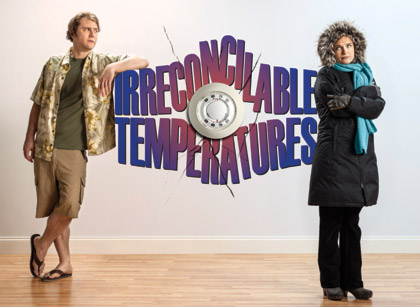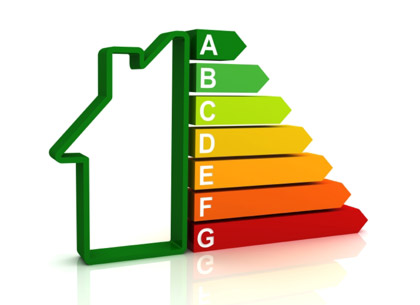NY Statewide Energy Efficiency: Motivating Residents One Home at a Time
As New York State pursues its aggressive energy efficiency goals, which includes decreasing projected electricity use 15 percent by 2015, the task of motivating New York homeowners to implement sustainable practices is becoming more complex. First is the need to educate residents on the benefits of energy efficiency upgrades. These projects often take a back seat to other remodeling priorities like new counter tops or furniture because they have little to no impact on the aesthetics of a home. Second is the issue of getting homeowners to hire a qualified contractor to ensure work is done properly to achieve the highest energy savings. Finally, convincing them to make a monetary investment during uncertain economic times requires a strong business case to ease fears.
To tackle these challenges head on and to pinpoint residents most likely to undertake energy efficiency upgrades, New York conducted a comprehensive market segmentation research study. Findings helped form the basis of a dramatically different marketing campaign that combines the appeal of humorous webisodes with an online interactive resource center designed to attract attention, to cut through clutter and to motivate New Yorkers to make their homes more energy efficient.
Improving the Shareability of a Good Cause
Mixing important government sustainability initiatives with humorous marketing campaigns is something that isn’t seen very often. Yet, with cable TV and the Internet further fragmenting and saturating the media market, the challenge of creating content capable of reaching above the noise to engage people is now requiring different approaches.
For years, cause-based marketing has relied on elements proven to capture attention: shocking statistics, serious stories and images that tug at heart strings. These tactics still garner results. However, a growing trend in recent years is to move toward marketing that can both inspire and make people feel good. The onslaught of digital and social media is fueling this trend by providing instant access to supporters as well as the opportunity to turn them into ambassadors willing to share a brand’s messages with hundreds or thousands of friends in their networks. The only trick to tapping this opportunity is the content needs to be highly engaging and highly shareable.
The Irreconcilable Temperatures campaign is just that. This movie parody, released in a series of humorous webisodes, tells the story of a young couple fighting over the thermostat, worrying about money and ultimately making energy-saving upgrades to their home. With help from the Home Performance with ENERGY STAR® (HPwES) program – administered by the New York State Energy Research and Development Authority (NYSERDA) – the couple is able to do more than save money on their energy bills and improve the comfort of their home. They’re able to save their marriage (not to mention the husband’s presidential sock collection).

Image Courtesy of NYSERDA
While the content might be lighthearted, it’s highly educational. Throughout the mini-sitcom, prospects learn the program’s basic benefits and simple steps to getting started. Along the way, they also absorb important reinforcing messages about the financial value and environmental benefit of saving energy at home.
For government agencies and not-for-profits, this type of marketing can be risky. Humorous content can decrease the perceptual value or urgency of a cause, or people might not respond to the type of humor showcased. In NYSERDA’s case, the agency minimized potential risks by taking a series of market research and messaging steps to create a sound strategy focused on becoming an invaluable resource for homeowners.
Targeting the Highest Potential for Energy Efficiency Savings
Since 1975, NYSERDA has been developing partnerships to advance innovative energy solutions in New York. As a public benefit corporation, this support comes in many forms, including offering objective information and analysis, innovative programs, technical expertise and incentives that work collectively to help drive energy efficiency and renewable energy technology markets forward. Under Governor Cuomo’s leadership, NYSERDA is working aggressively to support the rapid growth of New York’s cleantech economy, including bringing benefits of clean technologies into homes across the state.
Considerable opportunity exists in the residential sector to impact energy efficiency. American homes use almost 25 percent of energy consumed in the United States with approximately 80 percent of this energy use coming from single-family homes, 15 percent from multi-family homes (apartments, condos and co-ops) and five percent from mobile homes.1
Since 2001, NYSERDA has been tapping the potential in single-family homes by administering the Home Performance with ENERGY STAR® (HPwES) program, which takes a comprehensive, whole-house approach to improving energy efficiency and home comfort. Comprehensive home energy assessments and upgrades are conducted by independent home-improvement contractors trained and accredited by the Building Performance Institute (BPI).
To spur interest in program participation and to make it easier for residents to get started, especially within lower income or disadvantaged households, in late 2010 NYSERDA began offering free or low-cost whole-house energy assessments to most New Yorkers. The assessments, funded under the Green Jobs-Green New York Act of 2009, helped put the HPwES program on pace for a 20 percent increase in the number of homes improved in 2011 – a percentage equating to roughly 500 completed energy projects per month. However, with more than 3.5 million single-family homes in the state, NYSERDA recognized that additional efforts would be needed not just to communicate the value of residential energy efficiency but also to create emotional connections necessary to make it a priority with those homeowners most likely to actually invest in the work.
Understanding Motivators & Barriers to Energy Efficiency
For many homeowners, improving their home’s energy efficiency isn’t about being green or helping the United States meet environmental goals like reducing carbon emissions. It’s about economics, control and comfort. A typical home wastes about $700 worth of energy each year. That’s money that could go into strengthening savings accounts, paying bills or putting food on the table. An efficient house is warm during winter, cool during summer and a safer, healthier dwelling all year round from a quality-of-life perspective.
Outside the home, energy efficiency provides undeniable economic benefits to communities statewide, as energy-focused home improvement becomes a major growth industry. According to the 2011 Brookings Institute report, Sizing the Clean Economy, between 2003 and 2010 New York’s green economy had an annual growth rate of 5.8 percent. With 185,000 clean energy workers employed, the State boasts the second highest green workforce in the nation. In 2012, firms serving the green sector in New York expected to expand their workforce by more than 25 percent2, thus bolstering employment of skilled workers in building services, construction trades, professional services and component manufacturing.

© iStockphoto.com/frender
While the business case for home energy efficiency is well documented, are these benefits enough to motivate homeowners to invest in energy efficiency projects? To find the answer, in late 2011 NYSERDA conducted a quantitative segmentation study with 1,012 New York homeowners. Findings from this research painted a clear picture of the basic consumer mindset toward energy efficiency, and it identified drivers and barriers critical to developing marketing messages that would resonate with target audiences. Key take-aways included:
- A strong interest already exists for energy efficiency. More than one-half of responding homeowners (56 percent) said they plan to make energy efficiency improvements. Of that group, 87 percent plan to do so within the next three years.
- Comprehensive home assessments make sense and are the preferred first step. Before tackling energy efficiency, 64 percent said they are likely to obtain a comprehensive home energy assessment, thus showing there’s room and reason to sell assessments.
- Two-thirds of homeowners know their home is not energy efficient. Because they’re experiencing symptoms of a home using too much energy, such as high energy bills or uneven heating or cooling, plenty of opportunity is available to connect upgrades to solving problems.
- Most homeowners (70 percent) would hire a contractor to do some or all of the home improvement work, which shows a Do-it-Yourself (DIY) mindset is probably not a major barrier.
- Homeowners prefer a long-term, project-by-project approach to efficiency. Seventy-nine percent of respondents would prefer to make one or two energy upgrades at a time as their budget and time allows.
- Money matters as a motivator and as a barrier. Seventy-two percent say saving money on utility bills is the main reason to make energy upgrades. When homeowners decide not to make energy upgrades, money is a barrier with one-half indicating they can’t afford energy projects or need to save for other priorities.
- Loans aren’t a motivator for everyone. Only one-third say they would be willing to finance upgrades through a loan (the percentage that participate in NYSERDA’s loan programs). Of that one-third, two-thirds would prefer a lower-rate loan via a state loan program.
- Investment thresholds differ by income levels. The “optimal” price point on an energy upgrade package for households with incomes above $75K is $5,000. Incomes below $75K say the optimal spend for upgrades is $3,000.
- People want a relatively short payback period. Seventy percent indicate they would invest in efficiency if the payback period were three to four years, defining desired return-on-investment.
Through the research, NYSERDA also identified factors that didn’t seem to make a difference when considering energy upgrades, which helped eliminate some marketing considerations. Where a home is located in New York or its age or the income level of the homeowner doesn’t come into play in whether people believe their home is energy efficient or not. How much a homeowner currently spends on energy or the notion that upgrades will improve the value of a home are also irrelevant.
Identifying Those Likely to Adopt Energy Efficiency Practices
While the goal of most marketing strategies is to attract as many people as possible to a product, service or cause, a good strategy will target and motivate those most likely to buy by making both rational and emotional connections. Using the homeowner research, NYSERDA was able to segment homeowners into six distinct groups based on the desired outcomes participants said mattered most to them (rather than by geography or other demographics). This enabled the marketing team to develop a snapshot of the attitudes of each segment and to prioritize the top three groups based on their propensity to hire a contractor to perform upgrades:
- Difference Makers represented 15 percent of research respondents with 45 percent of those likely to move forward. These individuals want to help reduce America’s dependence on oil imports, their overall impact on the environment and amount of energy wasted in their home.
- Controllers accounted for 14 percent of respondents with 41 percent of those likely to move forward. These homeowners want to lower their energy costs now and for the future as well as the amount of energy wasted in their home. In taking control of their energy consumption, they want to see immediate savings on their energy bills.
- Comfort Creatures made up 11 percent of respondents with 41 percent likely to move forward. Making the temperature of their home more comfortable, lowering their energy costs now and for the future, and getting immediate savings on their energy bills are key motivators for this segment.
Although members of each segment vary in age, income level and geographic location, NYSERDA was able to pinpoint similarities among targets to identify foundational marketing elements that would resonate with all three segments. Because significant overlap occurred in underlying emotional drivers most likely to lead each segment to participate in the HPwES program, the marketing team also found they could use a single, compelling campaign to engage all three target segments. The only thing standing in the way was a restriction on using mass media advertising (TV, radio and outdoor print) due to its high cost.
Launching Irreconcilable Temperatures & Saving a Marriage
With people viewing more than four billion hours of video on YouTube each month3, the concept of telling a memorable story through online channels had considerable promise. So did the use of digital content that could be easily accessed and shared with others to extend reach. According to a 2012 study on the Psychology of Sharing4 conducted by the New York Times’ Customer Insight Group, the top five factors that influence online sharing are: 1.) ability to appeal to the customer’s motivation to connect with others, 2.) ability to establish trust, 3.) ability to keep the content simple, 4.) ability to use a sense of humor and 5.) ability to embrace urgency.

Image Courtesy of NYSERDA
Using the research, digital content trends and a room full of creative thinkers, the Irreconcilable Temperatures campaign was born. The webisode series provides the platform for memorable content “sticky” enough for viewers to share with those in their network who appreciate a funny video and good story. Equally important, those most likely to proceed with energy efficiency projects will see themselves in the characters: Husband Russell is the controller; wife Wendy is the comfort creature, and neighbor Olivia is the difference-maker.
To create a seamless pathway for converting New Yorkers from viewers to participants in the program, the video series is embedded into a micro-site. This offers prospects the ability to take the most important steps – applying for a free home energy assessment and contacting an accredited contractor. The micro-site also serves as the focal point of the integrated marketing campaign by offering visitors the education and resources needed to make informed decisions from watching a real-life, comprehensive home energy assessment to see how it works to reading real-life stories from some of the thousands of New Yorkers who have reduced their energy use by completing energy upgrades.
In late November 2012, NYSERDA launched Irreconcilable Temperatures and began generating traffic to the webisodes and micro-site using a combination of marketing strategies. This included public relations, pay-per-click advertising on Google, standard- and rich-media online banner advertising, limited print advertising in 15 daily newspapers and two waves of direct mail to targets in select New York regions. In the first four weeks, this activity resulted in more than 225,000 page views on the micro-site and more than 4,000 video views.
Because the average conversion timeframe between awareness and energy upgrade completion is three to six months, it’s too early to truly measure the success of the campaign. However, initial data indicate visitors are finding the content engaging and are spending an average of 4.27 minutes on the site compared to the industry average of less than one minute. Also, energy experts and bloggers are validating that humor, when done right, can be used to successfully connect consumers with government programs.
Elisha Wood, from RealEnergyWriters.com, shared on her blog: “I’ve seen energy folks try for comedy before and fail miserably. But these short sketches had me chuckling while learning about on-bill financing. A miracle. . . High-quality promotions like this are a big step toward making the world of energy accessible.”
In the coming months, NYSERDA will continue to keep people engaged through Irreconcilable Temperatures’ systematic, ongoing marketing approach. Ideas in the works include adding more interactive functionality to the micro-site. To see how Russell and Wendy’s energy-inefficient home put a chill on their relationship and how the HPwES program helped save their marriage, visit stars.nyserdagreenny.org.




























